Archive for ‘NAPO Conference’ Category
Paper Doll Recaps the NAPO2021 Virtual Conference
Each year, professional organizers and productivity specialists look forward to the National Association of Productivity and Organizing Professionals‘ Annual Conference with glee. We come from around the world for a handful of days to learn and laugh, dine and delight. So, you can imagine that like everyone else in March 2020, we were disappointed (though, due to circumstances, also relieved) when last year’s conference in Orlando was canceled.
The 2021 conference had been set to be in Long Beach, California, but as the COVID pandemic stretched on, it soon became obvious that those plans, too, would be cancelled, and efforts began in earnest to develop a virtual conference.
We all wondered whether a “real” conference would be possible, virtually. While Zoom and various other virtual platforms have grown in popularity, children have attended school online, and businesses have conducted work without conference rooms (or, sigh, birthday cake in break rooms), how could a virtual rendition of our conference deliver?
Very well, it seems, is the answer. Paper Doll thanks you in advance for indulging me in this post, which, like every year, I use to regale you with the true low-down on NAPO Conference. Whether you normally tune in here for organizing tips and are merely curious, or you are an organizing professional who missed this year’s experience, I hope you’ll enjoy coming along on this somewhat atypical conference recap.
ORGANIZING THE PLATFORMS
How would the virtual experience compare to our real-world experiences, we wondered?
Well, obviously there were no airports or hotels*…and sadly, no grand, dining experiences. There were also no committee meetings, as it was wisely realized that while at home, many of us would already be tempted by distractions of families, households, clients, and anyone else whom we’d be able to avoid if we were, in actuality, several time zones away. Rather than trying to juggle committee meetings on top of everything else, NAPO wisely limited the event types and interspersed them with online networking time so that we could get more of the facsimile of what we’d most miss.
* I should note, strictly speaking, that some professional organizers did choose to get hotel rooms. Away from the madding crowds, or at least their tiny humans, a number of wise professionals took the advice they’d have given their own clients, and carved out time and space just to focus on the conference. And a few hardy adventurers rented hotel rooms to socialize with already-vaccinated colleagues from their NAPO chapters and “attend” parts of conference together.
We also, sadly, had no Expo at which to sample the wares of various organizing, productivity, and technology companies. Over the past few years, our NAPO Expo has gotten smaller, as it’s hard for companies (especially the nifty, but tiny, startups) to shlep across the country for the bit of time we can carve out from education and networking to look at products. Hopefully, the same kind of wisdom that devised our brilliant virtual conference will find a way to satisfy our hunger for Expo displays of intriguing new products.
Wondering how it all worked? Well, we had more than one platform. We used a company called Hubb, which gave us this virtual lobby. We could click on the rooms in the video game-style layout below (or use the left-side menu) to access information about the individual sessions, the speakers, and the other attendees. Instead of a hotel help desk (wo)manned by our association management team, there was a detailed FAQ document with ways to reach out, virtually, to the team.
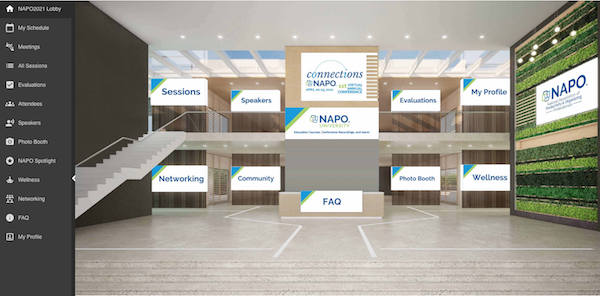
In lieu of inviting one another for walks in the fresh air or taking a few (way too) early yoga classes, NAPO found members willing to create “wellness” videos: a desk break, guided meditations, and yes, even a few yoga video sessions.
There was a photo booth, though we could only take selfies to display in a gallery. (Let’s hope someone figures out technology that let’s us squish our heads more closely together!) Instead of personalized badges with our stream of ribbons telling whether we hold leadership positions, to which chapters we belong, and what our “extracurriculars” might be, we had a profile section for listing all our nitty-gritty details. Some left it blank, others included their entire resumes. And some of us, relishing the opportunity to mix business with pleasure, got a little silly.
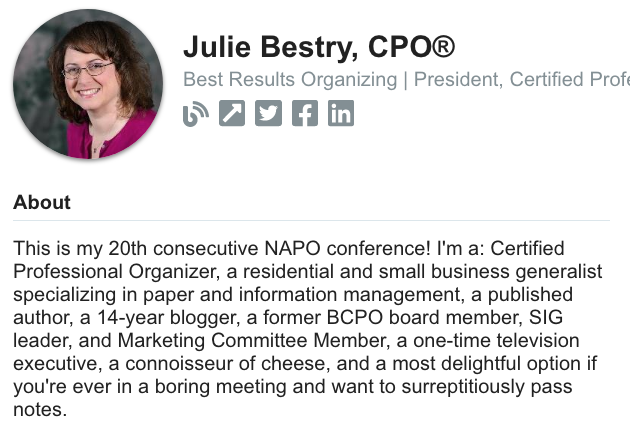
To “attend” a particular session, there were a few steps. Instead of walking to the session room, you had to add a session from the master list to your personalized schedule ahead of time. (General sessions to which all members are invited already appeared on everyone’s individualized calendars.)
If you wanted to attend a concurrent educational session, you’d click on it in your calendar. The ensuing page would include details about the session, an embedded pre-recorded video, and a chat box. At first, I think we were all slightly dismayed to learn that all the sessions were pre-recorded, but it actually turned out to be a boon for the educational experience.
In a live conference session, both the speaker and the attendees can feed off one another’s energy, but anyone who has lived on Zoom in the past year knows that’s not how virtual works. However, simultaneous with the video, the attendees could interact with the speaker and with one another via chat, leading to lively riffs on the content and (especially during technology sessions) a deeper understanding of the material.
No platform is perfect, of course. You could pop out the chat box to have it run parallel to the tab with the video, but if you wanted to enlarge the video, you had to make it full-screen, eclipsing the chat screen (unless you had two monitors or wanted to use a second device). Still, we were all impressed by the ways in which this recorded+live interaction amplified the learning experience.
To attend general sessions, the experience was mostly the same, although the videos were a combination of live and pre-recorded. However, for interactive sessions, our personalized calendar event pages sent us to Zoom sessions. (In 2021, there is no avoiding Zoom!)
Finally, for networking, our personalized calendar links would take us to our second platform (or third, if you count Zoom), Remo. Luckily, I’d used Remo last month for the Time Blocking and Task Management Virtual Summit, so I feel like I had a bit of a head start.
Basically, Remo’s platform is like the overhead view of a wedding seating chart, with “tables” designated for two, four, or six people, and with some events, there are added couches for a karaoke lounge kind of feel. Depending on the activity, tables were either themed or just numbered.
From the overhead view, you could spot a person’s profile photo, think, “Oh, I want to chat with her!” and double-click on that table to be taken there. Once “at” the table, you were added to a Zoom-like video chat. The shot below shows the stragglers as we shut down the conference.
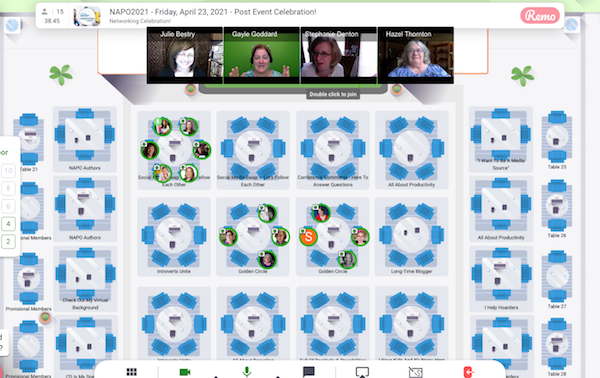
One small click on an icon on the lower left and all of the video squares enlarged to fill the screen. Another click on someone’s photo let you send them a message. And a small “elevator button” panel on the left let you go to higher level “floors,” identical, but less sparsely crowded, during the high-traffic times when it was almost impossible to find a “seat” in the room.
(As a few of us learned, the upper floors were also a great place to hide out for a moment, get a breather, and fix our hair while looking in the camera before rejoining the crowded tables.)
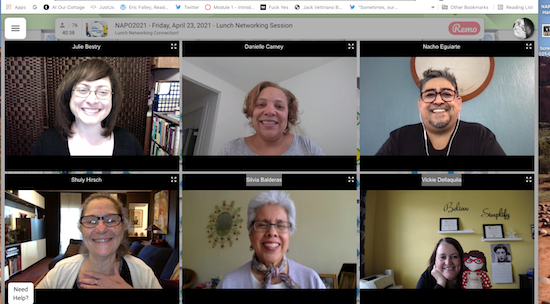
Because networking is informal, it had that lovely cocktail party-esque flow of old friends and new. Conversation ranged from how to use the platform to our thoughts on the sessions we’d just attended, and at one late afternoon session, to our reaction to breaking national news. Just as with a live-and-in-person conference, virtual networking gave novices a chance to meet and chat with veterans on a level playing field.
And although this was my 20th consecutive NAPO conference, I got to completely fan-girl when Stephanie Culp, one of NAPO’s original founders (way back in 1985, the year I started college) sat down at a two-top table with me. Hers was the first organizing book I’d ever purchased, a decade before I ever became a professional organizer!

I’ll admit, I felt pretty special that although we’d never actually met, she’d chosen to chat with me..until I found out the system just plopped her down at my table when she entered Remo. But hey, she decided to stay and chat for half an hour, so I’m going to take that as a career win!
EDUCATION
One of the main purposes of the NAPO conference is education, to help us serve our clients and to start, build, and grow our own businesses. To that end, at the beginner, intermediate, and advanced levels, NAPO conference presented programming in five educational tracks during each of the six concurrent sessions over three days of our conference. (Yes, I know, I usually promise you that there’ll be no math in these posts. Sorry.)
Organizing & Productivity Track
These kinds of sessions are the bread-and-butter classes, where we learn techniques and strategies in a variety of specialized organizing and productivity fields.
Moving On Up: Grow and Add Value with Moving Services presented by Gayle Goddard, CPO® and Ann Zanon, CPO®
Right Sizing for Tiny Living – Connecting To What Matters Most presented by Tricia Sinon Murray
Focus Your Profits on Photo Organizing presented by Jill Yesko, CPO®, CPPO
Grow Your Business: Expand Into Estate Clearing presented by Candi Ruppert, CPO®
Student Organizing – The What, Why and Is It For You? presented by Amanda Lecaude
Beyond Organizing, Office Design and Space Planning presented by June Carter, CPO®
Mind & Behavior Track
As I often say, professional organizing is not about the stuff, it’s about the person who owns the stuff. To that end, we are always offered classes that consider the psychological, neurological, and emotional challenges our clients face.
Managing Difficult Clients (and Situations) with Clear Boundaries presented by Lauren Mang
This is Scary: Embracing Discomfort to Help You and Your Clients Succeed presented by Sara Skillen, CPO®
Organizing the Invisible: Women, ADHD, and Emotional Labor presented by Regina Lark, CPO®
The Hierarchy of Healing Your Home presented by Dorena Kohrs
Connecting the Dots: Organizing Clients with ADHD by Working with Executive Functions presented by Erin Morper
Although I had not intended to follow a particular track, three of the six sessions I attended were in this Mind & Behavior track, and I was deeply impressed. I can see how much of what I learned will be fodder for discussion with my clients.
Sara Skillen shared some profound wisdom about embracing fear as we push past our comfort zone, and her comment that “Learning to tolerate discomfort lessens its power over you” has been echoing in my head for days.
Sara Skillen shared some profound wisdom about embracing fear as we push past our comfort zone. Her comment that 'Learning to tolerate discomfort lessens its power over you' has been echoing in my head for days. Click To TweetSara’s presentation was guided by her book, Organizing and Big Scary Goals: Working With Discomfort and Doubt to Create Real Life Order.
Paper Doll Models the Spring 2021 Organizing Products
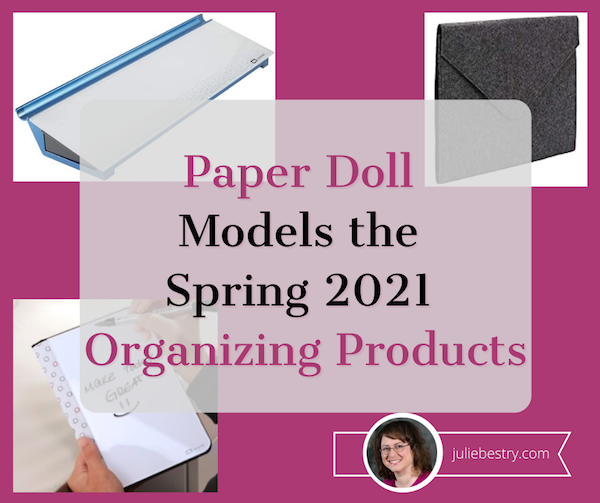
It’s finally springtime, the perfect time for new organizing supplies!
For most of the fourteen years I’ve been writing this Paper Doll blog, I’ve delighted in sharing new organizing products displayed at the annual NAPO Conference & Expo. Unfortunately, last year, the conference was canceled due to COVID. This year, although we’re very excited that we will get to have a 2021 NAPO Conference (albeit virtually) next month, there will not be an expo.
However, that doesn’t mean you’ll miss out on new organizing products! I’ve been collecting tidbits and emails over recent months, enough to assure you that there are novel and interesting organizing products out there in the world, and today, we’ll look at a few of them.
Organize Your Papers & Information
Whether you feel like you’re working from home or living at the office, whether “work” is your career or your volunteer gig or having a serious meeting at your kids’ school, the business of your life involves a lot of moving parts. Let’s look at what make these efforts run more smoothly.
Smead Soft Touch Cloth Expanding Files
Right now, most people’s “meetings” are held virtually, with each person in his or her own Brady Bunch-style box on Zoom or the equivalent. As long as we’re dressed from the waist up and have combed our hair, we pass muster. Nobody can see much below our shoulders, so if we’ve scribbled our notes on a Snoopy memo pad, our co-workers won’t be able to tell.
But imagine someday soon, it will be like the “before times” – eventually, we’ll all be back in the “real” world, with in-person meetings. And for good or ill, style will matter, at least a little, and we won’t be able to just carry an armload of papers as we might do now, from couch to desk. Somehow, I suspect our old briefcases will seem stodgy, a remnant of another era, but backpacks will feel just a little too casual for a meeting with the CEO. Smead has found a middle path.
NAPO 2019: Organizing With a Heart as Big As Texas

As you read this post, professional organizers from all over the United States – plus many of our colleagues from Canada, Mexico, Central and South America, Europe, and Asia (and surely some from a few surprise locales I don’t yet know are coming) – are about to touch down in Ft. Worth, Texas to attend the annual NAPO conference.
First, there will excited squeals of delight as we find one another in the hotel lobby and hallways like high school students returning after a long summer away. Before we officially begin, there will be leadership training events and half-day pre-conference sessions on productivity and marketing.
By Thursday afternoon, once our opening keynote kicks off, until late Sunday, when we roll our organized (if possibly overstuffed) luggage to the curb, there will be classes and meals, networking and dancing, business goals made and diets broken.
If you hear the hum of far-off applause, I suspect it will be for Gretchen Rubin, author of The Happiness Project, and one of our keynote speakers. Her new book, Outer Order, Inner Calm – Declutter and Organize To Make More Room for Happiness came out this month, and I suspect professional organizers will be clamoring to hear her take on championing our passion for order.
NAPO2018: Paper Doll Explores Meori & the Glorious Goodies Within

In the last few posts, I explained that this year’s NAPO2018 was billed as a retreat instead of a conference and expo, and without an expo, I feared that I’d have no bounty of new products to share with you. However, thanks to our sponsors, even without an expo, I still have some goodies to present.
MEORI
At our welcome event, all conference attendees received a Meori foldable box absolutely filled to the brim with goodies. Mine was this Lava-Black-with-White-Flowers version, but Meori (a product I’d planned to profile this spring anyway), comes in a variety of gorgeous patterns and colors. That said, I couldn’t convince any of my colleagues to trade me this one for a Paper Doll-themed Midnight Magenta Meori box.

The Meori foldable boxes are made from high-grade, tear-proof, dirt-resistant polyester that you can wipe clean with a damp sponge. Did you know that the German word for “dirt-resistant” is schmutzabweisend? Boy, Meori’s packaging is educational!
All varieties fold or unfold in three easy steps to become a completely stable (but decorative) storage box secured with a wide elastic band. With the exception of the Mini, all styles hold up to 65 pounds! (Paper Doll does not advise having so much stuff in your Meori box that it turns into clutter you must cart around, but it’s nice to know that Meori is sturdy!)
The Classic Meori comes in four sizes and all have elastic mesh interior pockets.
Mini – The mini measures 5″ L x 6 1/2″ W x 5″ D, and is perfect for organizing teeny things in a bathroom, dorm room, school locker or car. The Minis come in Hibiscus Red (pictured below), Azure Blue, Marine Blue, Pink Berry, and Spring Green. ($12.99)
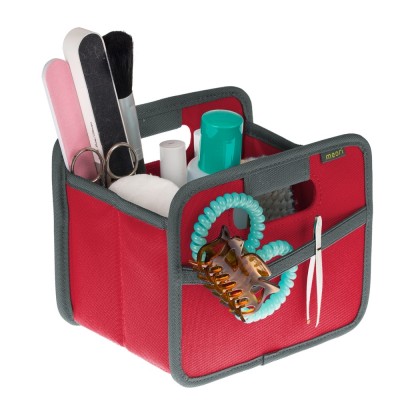
You can also purchase a shiny silver-finish wall mount for the Mini ($5.99) to keep things accessible on the back of a door or on a wall near where you’re heading out of the house. There’s also a collapsible Meori Mini Hanger in Marine Blue that lets you store three Minis vertically, hung from a velcro loop on the bar of your closet.
- Meori Mini Hanger
- Meori Mini Hanger – collapsed
Small – I was a little shocked to learn that my own Meori (pictured up top) is considered the Classic Small, because it’s fairly mighty. It measures 12 3/5″ L by 10 5/6″ W by 10 3/7″ D, and holds 4 gallons of whatever stuff you throw into it. (If those measurements seem odd, recognize Meori, a Japanese-themed German company, like most of the world, uses the metric system, and 32 x 27.5 x 26.5 cm sounds a bit less unwieldy.) The Small comes in 31 different color/pattern combinations in solids, polka dots, and flowers. ($25)
Medium – The Meori Medium comes in ten color/pattern combinations, with solids or star patterns, and measures 12 3/5″ W x 10 5/6″ H x 14 4/7″ D (again, it makes more sense in the metric system). It’s perfect for carting groceries or other shopping items (up to 6.5 gallons of goods) from cart to car to house and back out again. ($30)

Large – The Classic Large should probably be called the Double-Duty. It comes in 34 different color/pattern combinations, measures 19 3/4″ L x 12 3/4″ W x 10 3/4″ D, and has two interior compartments. It will hold 8 gallons of whatever you’ve got! ($35)
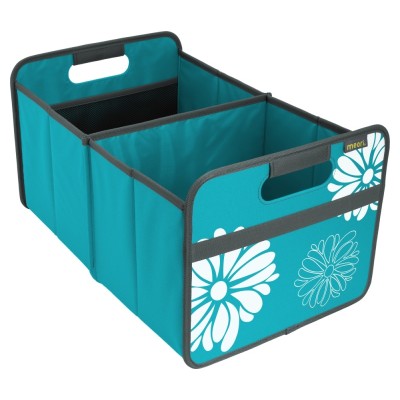
All of the Meori foldable boxes collapse down to between one and two inches thick, making them easy to ship or store when not in use.
Other Meori foldable boxes include:
Office – Measuring 12″ W x 13″ H x 12″ D, suitable for standard letter-sized folders, and able to hold up to 65 pounds, the Office Meori has built-in plastic file rails and a rewritable label. It’s ideal for mobile offices and workers who shuttle between locations, and folds down to 1 1/9″ when not in use. (For European readers, there’s also an Office A4 style.) Unfortunately, it only comes in Lava Black or Solid Grey, which is a shame given the rest of Meori’s bold color palette. ($40)

Outdoor – This outdoorsy version of the Meori has the same measurements as the Classic Large, but is made of water-repellent rip-stop fabric. Suitable for camping, sailing, picnics, and other outdoor adventures, it includes snap buttons and 4 metal grommets so you can secure it to a truck bed or tie it up to a boat. The Outdoor can be adjusted to use as two small boxes or one large one. ($42)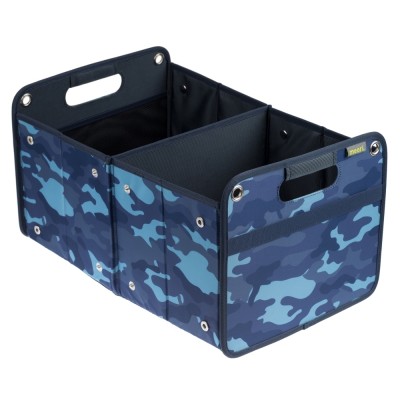
Meori has developed a line of accessories, including a 26″ padded, nylon carrying handle with metal hooks for use with the Small, Medium, and Large Classic foldable boxes, and a 56″ adjustable, nylon shoulder strap for use with the Small, Medium and Large Classic foldable boxes as well as the Office and Outdoor boxes. There are also covers for the Classic and Outdoor versions to protect your contents from rain, sleet, snow, dust – and, if you live in the southeastern US as I do – pollen!
If you’re looking for something to keep up with your snacking habits, Meori has a foldable cooling bag with a zipper that will fit in the Classic Small, Medium, and Large versions, and a tailgate carrier set with the Classic Large and the cooler, combined. The Picnicker fits in the Classic Small, Medium, and Large, and will secure four sets of (nesting) plates, cutlery, drinkware, and a cutting board. If you plan on taking some beverages along, Meori has 9- and 16-compartment expandable, padded bottle inserts.
Intrigued? Check out Meori’s site to find other attractive, durable, collapsible/foldable options, including 2-, 6-, and 12-bottle wine totes/carriers, insulated lunchbox cooler, hobby box, and more.
THE OTHER GOODIES
Our sponsors didn’t leave those Meori boxes empty. Inside, we had a bounty of useful items including:
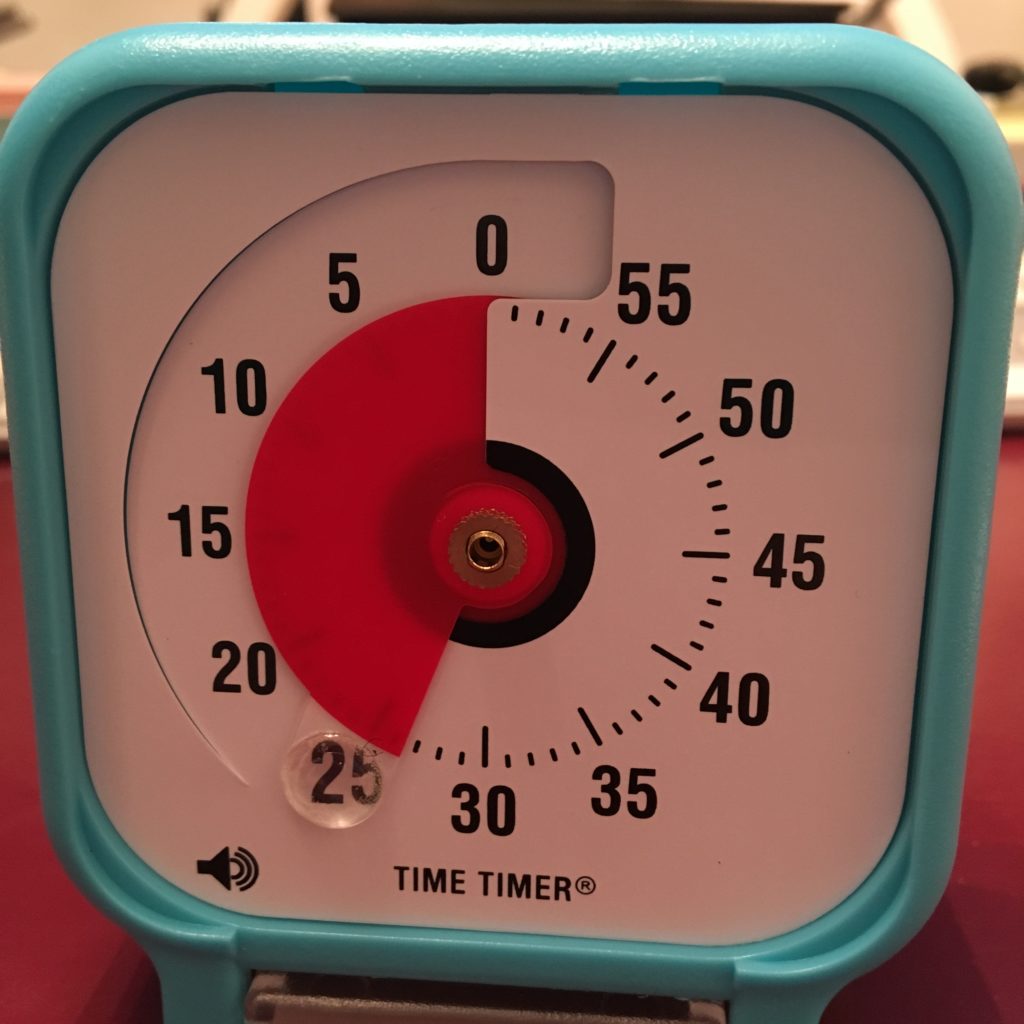
Last year, I wrote Paper Doll’s NAPO 2017 Recap: New Twists on Time Timer and I’ve repeatedly shared all the reasons to love all of the incarnations of Time Timer. My old (circa 2002) Time Timer has certainly been put through its paces over the years, so I’m excited to add this tiny 3-inch powerhouse to my procrastination-fighting arsenal.
Container Store Zippered Pouch
Our friends at Container Store gifted all NAPO2018 attendees a large, zippered pouch. Made of nylon mesh embedded in clear vinyl for reinforcement, it’s weather- and puncture-resistant, and perfect for keeping travel or other documents sorted, clean, and dry. The pretty aqua detailing and zipper add some panache, and I’ve just noticed that it all matches the Time Timer version I got! How very organized!

Others of our sponsors made sure we stayed hydrated and healthy. Brother quenched our thirsts by supplying these nifty water bottles we could hang from our pinkies while schlepping across the “campus” between sessions.
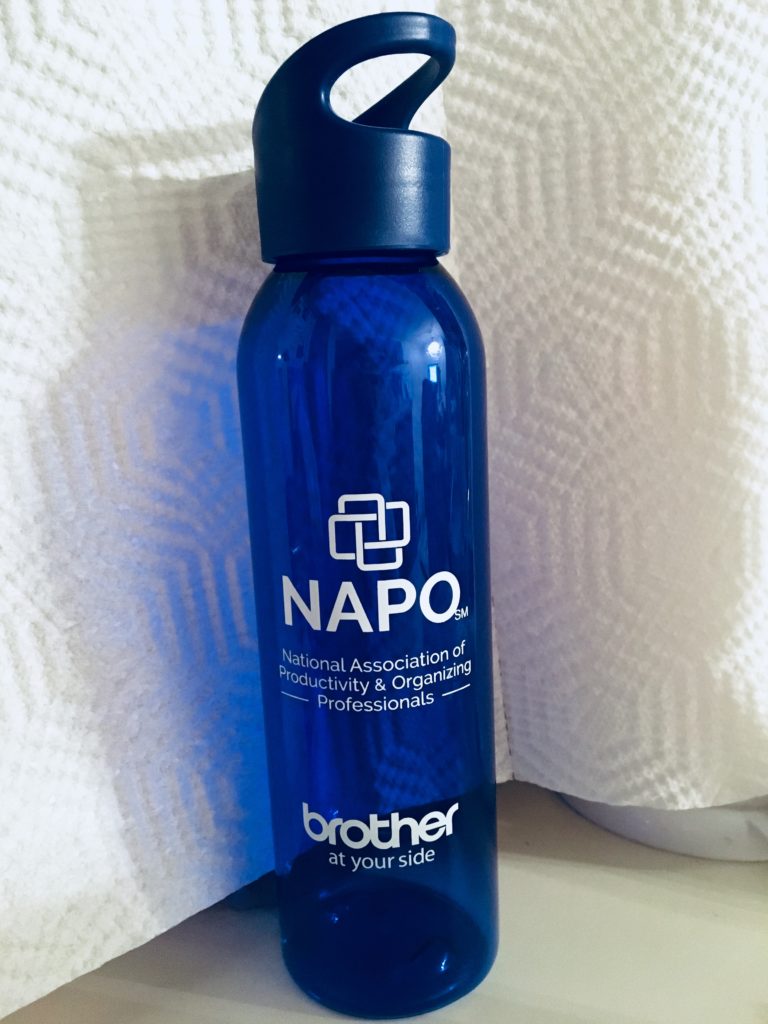
Meanwhile, RXBar, a company that makes “whole food protein bars” in 15 different flavors (using egg whites, dried fruits, nuts, and dates, and just one or two other natural ingredients, provided bars for munching. (I got Blueberry!) And our own Denslow Brown of the Coach Approach for Organizers made sure we had some Emergen-C, just to make sure we didn’t get run down!
BUT WAIT, NO PAPER ORGANIZING PRODUCTS?
Although we did not have an expo this year, our friends at Smead (one of our two major NAPO2018 conference sponsors, along with Brother) knew that I couldn’t survive a NAPO conference without getting to hold organizing supplies in my hand. So, with great foresight, Smead brought our favorite people and some (new) favorite products. Coming up soon, we’ll delve into the newest and niftiest of what Smead had to show us.
NAPO2018: Paper Doll Reports from the Retreat

As I reported last time in NAPO2018: Advancing at a Retreat, this was not set to be our usual annual conference and expo. Indeed, there was no expo, and the atmosphere was more of a sleepaway camp than a high-rise hotel conference.
BACK TO SCHOOL
The grounds of the Q Center, a former college campus, were beautiful, with little lakes and fountains dotting the vista.

However, if you recall your own halcyon college days, you may also remember rooms more like the saddest staterooms on the Love Boat and less like luxury hotel suites. (See below for Paper Doll‘s cozy quarters.)
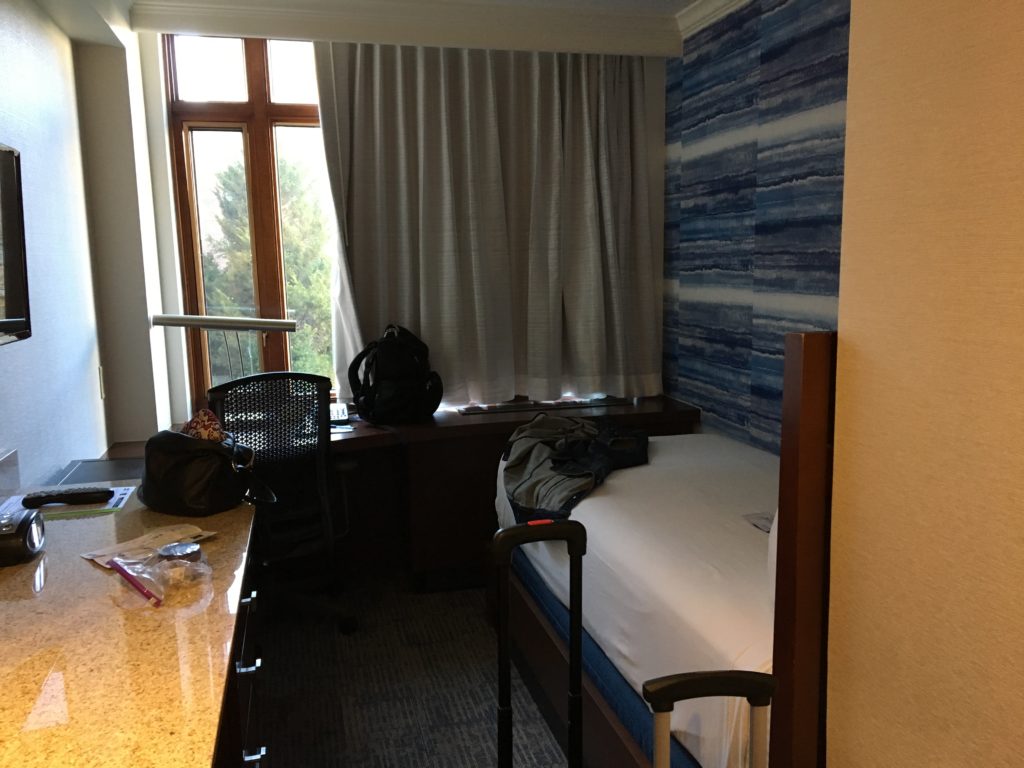
That said, the plentiful food was delicious, and NAPO members came from throughout the United States, as well as from everywhere across the globe, with a healthy accent on our organizing friends from Central and South America.
Food and tiny beds aside, we NAPO members flock to our conferences for the camaraderie and education, and both were in full force this year. After a leadership event for chapter and committee volunteers, NAPO2018 opened with a keynote address from therapist, coach, and speaker Jessica Butts on how to “Live Your Life from the Front Seat,” a rousing presentation on capitalizing on your best attributes while understanding and making the most of your Myers-Briggs (personality) Type Indicator (MBTI).

ON THE RIGHT TRACK
There were four main educational tracks for this year’s retreat format, most reflecting a slight change in focus (less technology and professional development, more self-care and self-growth) vs. other years. Certainly, we did have some traditional coursework. For the Business Growth track, attendees’ options included:
- Oh, the Places You Can Go! The Life Cycle of a Professional Organizer
- How to Streamline Your Business Marketing
- Build Success with and Gain Chronic Disorganization Clients When You Develop and Use a Collaborative Network
- Quickbooks Efficiency 101: How to Save Tons of Time
- Grow Your Business with Employees, Subcontractors, Mentors & Virtual Assistants
- Leads Inspiring Leaders: Winning Strategies for Personal and Business Growth
For the pure Organizing Education track, we could take sessions entitled:
- Opening Doors to Sustainability – Environmentally Conscious Organizing: Simple Sustainable Secrets for You and Your Clients.
- Transform You & Your Kitchen for Healthier Eating: How to Create a Functional Kitchen & Eat Well
- In Five Minutes or Less, Would Your Clients Be Ready for Anything?
- Multitasking Makes You Stupid: Discover the Myth of Multitasking and Learn the Powerful Effect of Focus Instead
- Behind the Scenes of the Successful Organized Family: Teaching Clients to Be the CEOs of their Households
- Microsoft Outlook: Beyond the Basics
Beyond these sessions, though, we had two intriguing tracks from which I selected the bulk of my classes. From the first, the Experiential track, I actually attended four of these six sessions:
- Space Planning for Professional Organizers
- From Inking to Accomplishment: How to (Finally!) Achieve That Big, Bold Goal
- Delivering an Experiential Workshop for Success
- Cultivating Creative Space with Vision Boards
- I’m OK, You’re a Complete Mystery! Discover the Owner’s Manual for Human Beings and Exponentially Improve Your Relationships with Clients, Prospects, and Beyond
- DIY Hand Tools for the Professional Organizer
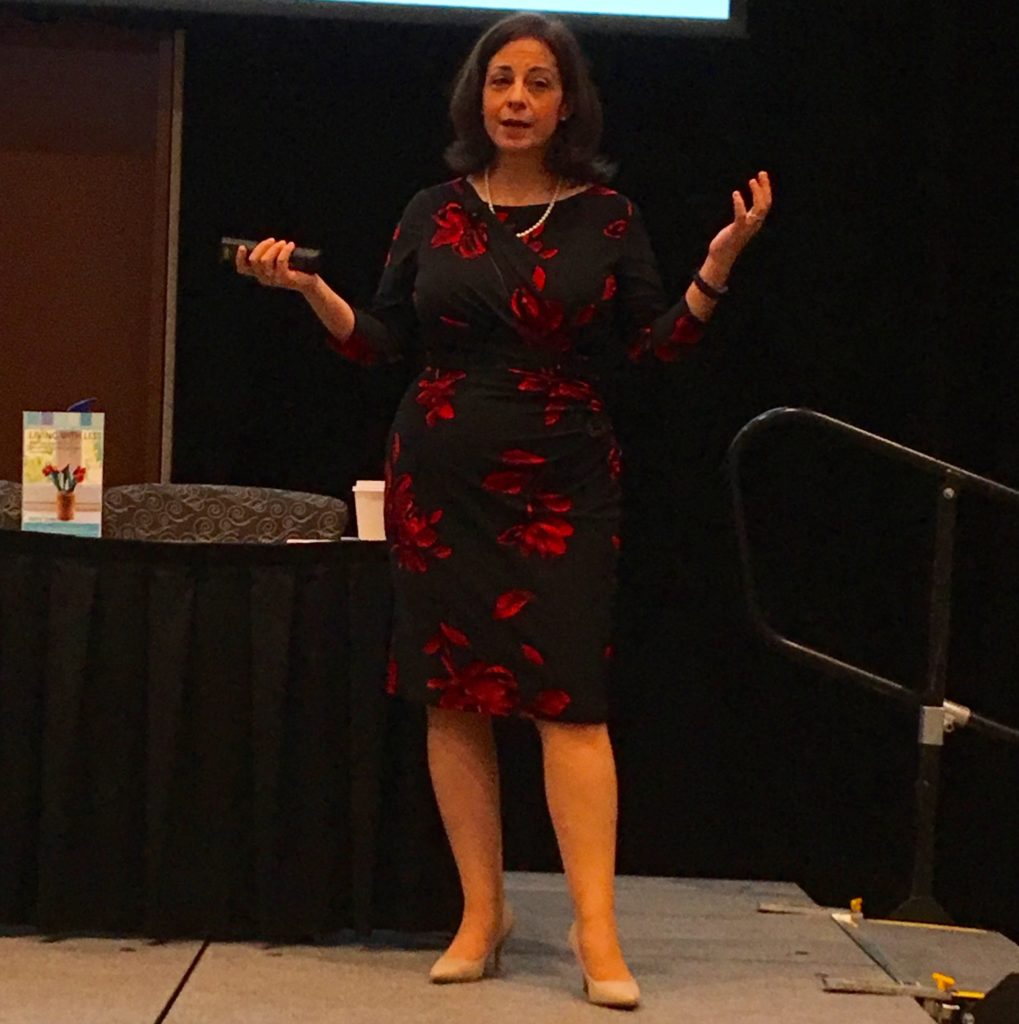
In “From Inkling to Accomplishment,” Kathy Vines, CPO® led us in group and one-to-one interaction to help us (and help us help our clients), turn our ambitious aspirations into goals we can actually achieve. We learned how to fight the “cocktail of self-doubt and perfectionism” and silence the negative self-talk that sometimes cuts us off at the pass.
We also had practical opportunities to break our dreams into small, actionable steps, identify sources of inspiration (to keep us motivated when self-doubt does creep in), and learn how to capture the knowledge and resources as they appear. Indeed, Kathy’s comment that we must all “prepare for the inconvenient epiphany” will likely have the starring role in a future Paper Doll post on capturing information beyond the typical notepads and Evernote suggestions.

NAPO’s Immediate Past President, Ellen Faye, CPO®, presented two sessions in one with “Delivering an Experiential Workshop for Success.” First, she taught us the core principles of a high-quality experiential workshop – creating a safe environment and using best practices to spark creativity and provide time for processing and integrating information. Then she actually presented an experiential session on creating a personalized “success formula” by helping us identify our core values and revamp our schedules to focus on work that reflects those values. It’s hard to describe in a paragraph, but (to bring in a prior lesson), inconvenient epiphanies were had, and eyes were opened!
In the session, “I’m OK, You’re a Complete Mystery,” Patty Kreamer, CPO®, provided a fascinating and energetic counterpoint to our opening keynote on the Myers-Briggs Type Indicators. Patty taught us about the DiSC Behavioral Style Model. In both cases, we learned how to identify our own styles and interpret our clients’ styles so that we might better communicate based on how they learn best and what they prioritize.
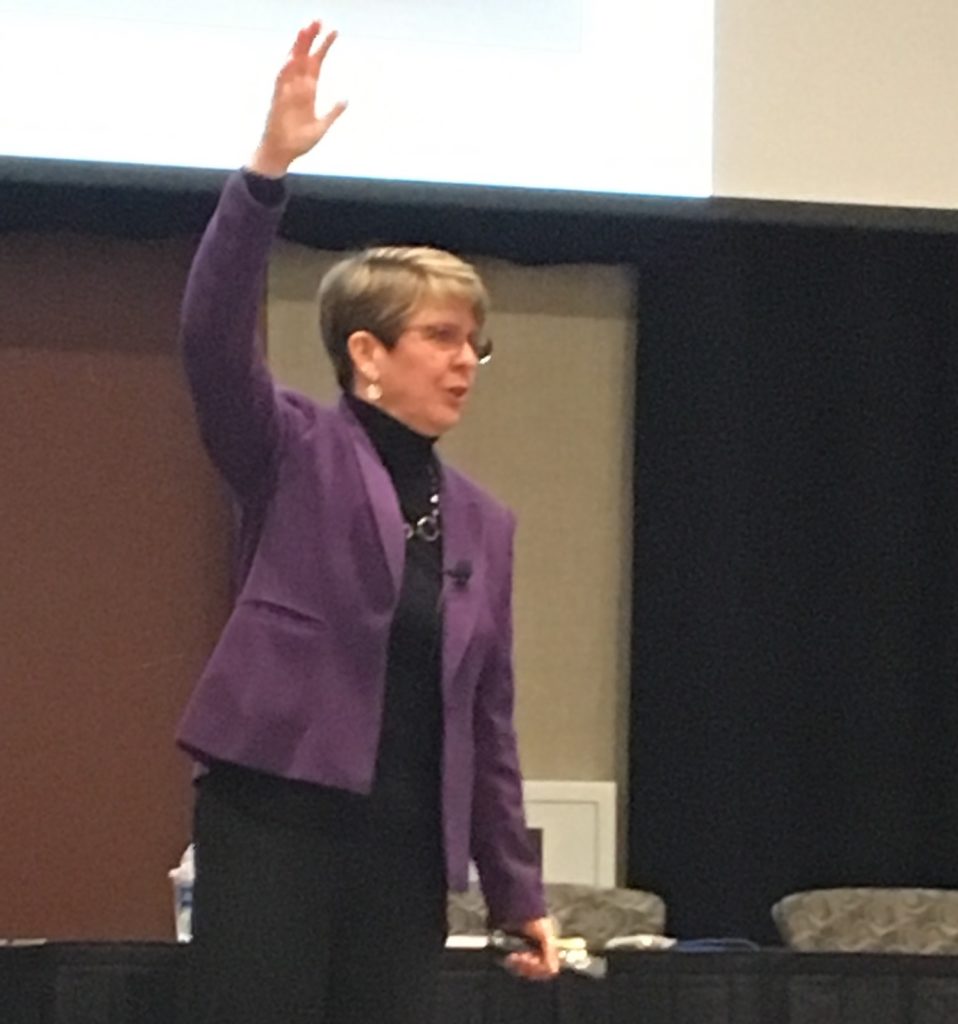
Most entertaining was the example Patty gave regarding Influencers (the little “i” in DiSC, also called Promoters). Patty referenced NAPO’s POINT community, an email platform, contrasting those who write brief, laconic responses vs. the chatty folks who write whole novels. For those of you who follow Paper Doll‘s lengthy blog posts, you won’t be surprised that I jokingly self-identified, raising and waving both hands. From the podium, Patty opined, “Yes, Julie, we know that’s you. Novels. But QUALITY novels!” As Patty taught us, understanding ourselves better is the first step toward becoming more effective when working with others.
My last session of the conference, and certainly the most experiential, was “DIY Hand Tools for the Professional Organizer,” taught by our colleagues Carol Jones and Roberta Andrade (the latter coming all the way from Brazil).
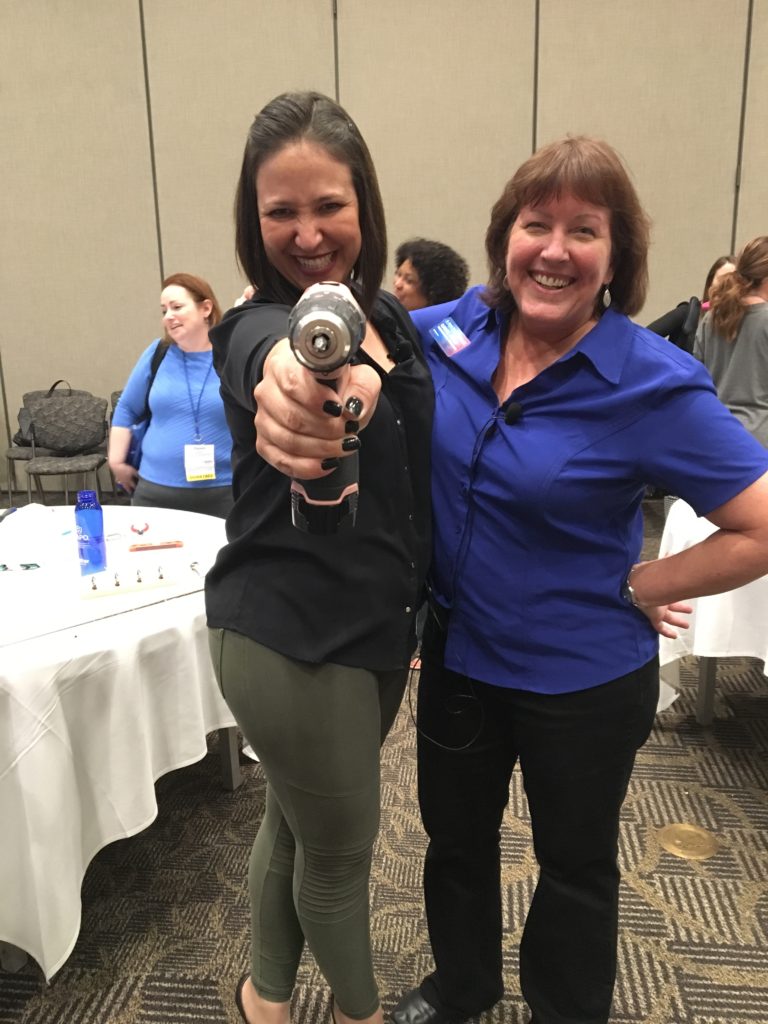
Having gone into the class not even knowing that sheetrock and drywall were the same things, literally everything in that class was new to me.
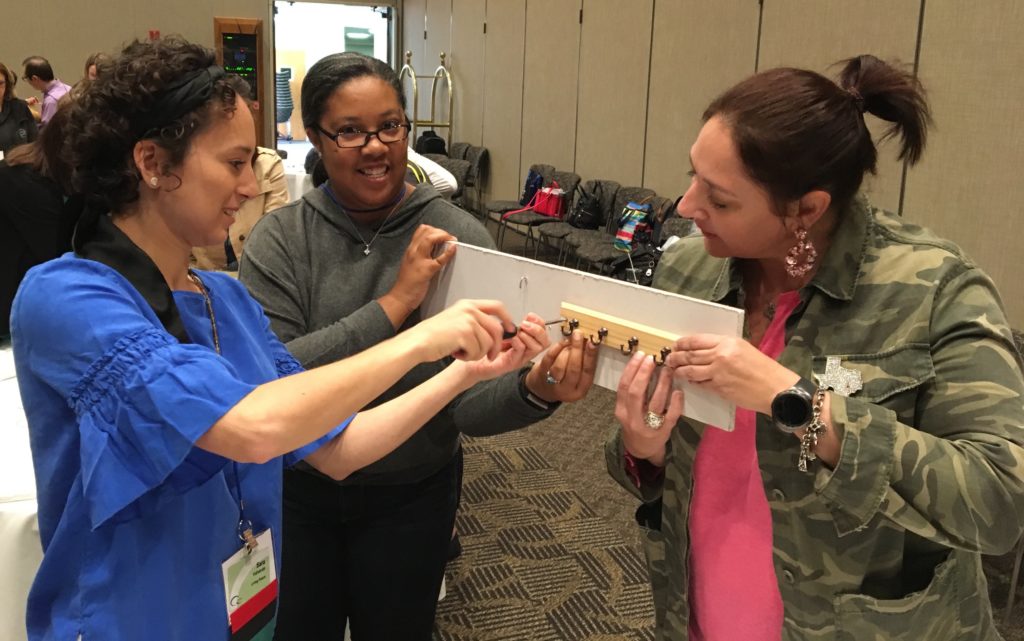
I got to use metal anchors to screw a hanging rack into drywall, learned the safety rules for using utility knives, and when to use a mallet vs. a hammer – hammers with nails, only, please! Perhaps the most useful thing I learned was how to easily insert Monkey Hooks in the wall to hang pictures – no hammers or nails needed.
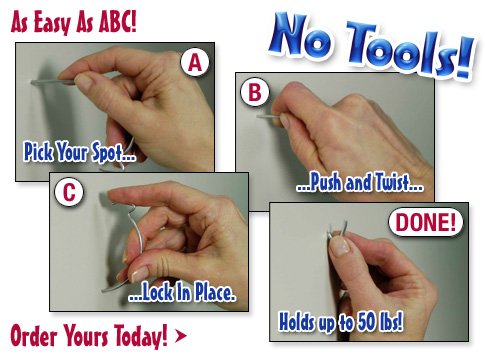
Our last track, and the one that most fit the concept of a retreat, was the Self-Care track. Professional organizers are as at risk (or more so) for burnout and overwhelm, and our clients are surely in need of guidance for self-care, so the sessions in this track were remarkably on-point. They included:
- Learn to Be Limitless: Silence Self-Doubt and Claim What’s Yours
- Organize My Own Day – Who’s Got the Time?
- Goodbye, Work-Life Balance. Hello, Better Boundaries!
- Simple Self-Care: Sleep. Create White Space. Walk.
- Yogic Tools for Organizers’ Needs
- Bringing Meditation and Mindfulness into Organizing and Productivity: Strategies for Self-Care and Work with Clients
In transformational coach Heather Vickery‘s “Learn to Be Limitless,” the curriculum seemed to have been built after peering in the windows of our group of high-achieving professional organizers and productivity consultants. We learned skills for setting better boundaries and communicating them more fully, reframing the limiting voices that stop us from achieving, and identifying the myriad ways to improve our own productivity and that of our clients, including the courage to delegate. As Heather said, “Just because you can do it all doesn’t mean that you should.”
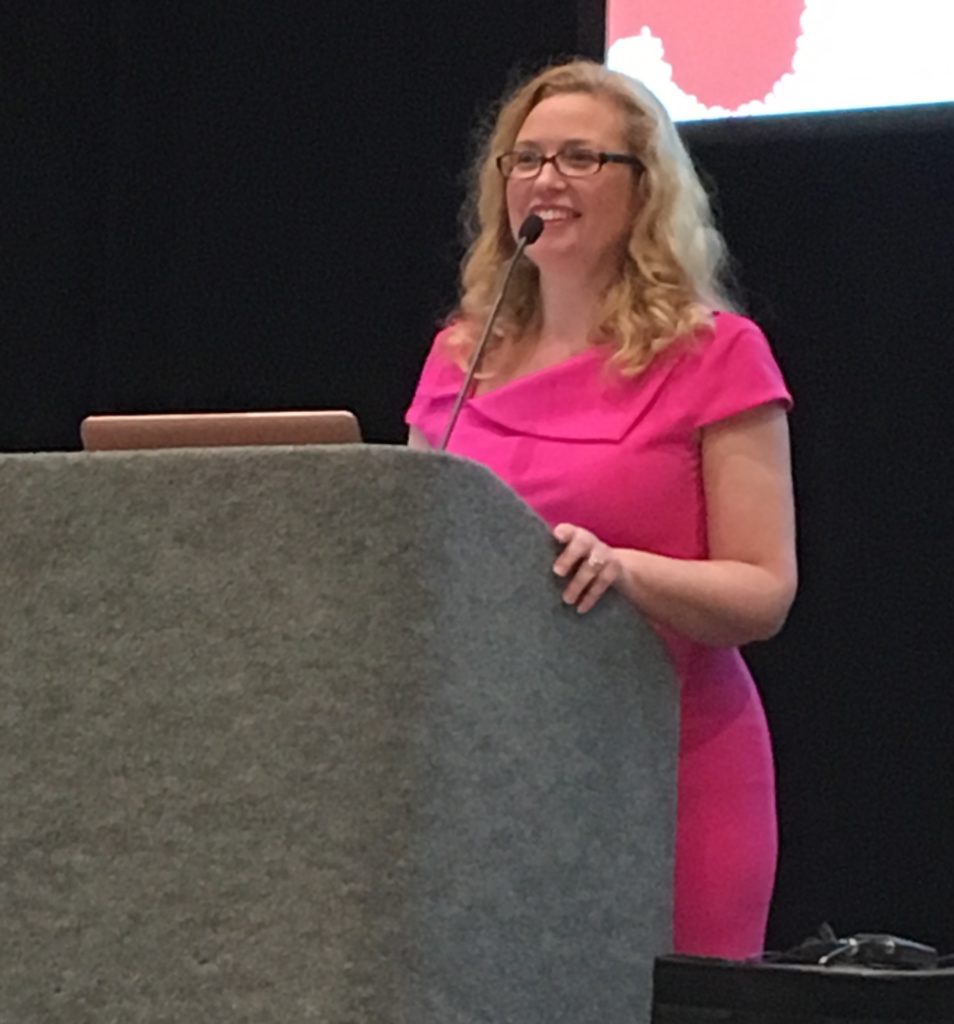
Heather also imparted some great life lessons for understanding how the willingness to be vulnerable and authentic can take us from fear-based to possibility-based decision-making and reminded us that the keys to our empowerment are in our own hands.
Ironically, “Simple Self-Care: Sleep. Create White Space. Walk.” was taught just after lunch and a long NAPO-wide meeting at the farthest outpost of the Q Center campus. Sluggish, we all took note that having too little white space in our schedule, too little sleep, and a stressful race-walk to the classroom meant the title of the session could not have been more appropriate.
Lisa Luken and Laurie Malloy presented a scientific research-based guide to the essentials of self-care and even provided a bibliography of resources to help us (and our clients) get enough sleep and increase the quality of it, eliminate overwhelm by increasing white space (both tangible and temporal), and use the power of walking, particularly in nature, to improve our creativity. The advice provided helped us hone our insight into what drains our energy vs. what allows each of us to gain energy. In fact, I’d have written this post days ago if I hadn’t committed to putting these lessons into practice, getting more sleep and injecting fewer tasks in my schedule! (So, blame Lisa and Laurie for the wait!)
OFF-TRACK BUT ON-POINT
The tracked sessions weren’t the only elements of this retreat designed to shake things up. For those able to face a 6:30 a.m. session, we had a variety of mind-body options, including yoga and “Claim Your Feminine Power: A Bellydancer’s Perspective on How to Lead, Love, and Live as a Woman (Without Losing Your Mind),” a title that did not seem to offend our small but loyal group of male colleagues. (I suspect the chance to sleep an extra hour and have a leisurely breakfast appealed to them as much as it did to me.)
Another option was “Applying Buddist Principles to Professional Organizing and Productivity Consulting,” a session that appealed to me intellectually, but – if you will allow me to mix spiritual practices – the spirit was willing, but the flesh was weak (and I slept right through that Sunday 6:30a option).
On Friday night, for those of us who managed to get through our dinners quickly, we had two alternatives: a follow-up session with our lively keynote speaker or “Unleash Your Inner Superstar.” I opted for the latter.
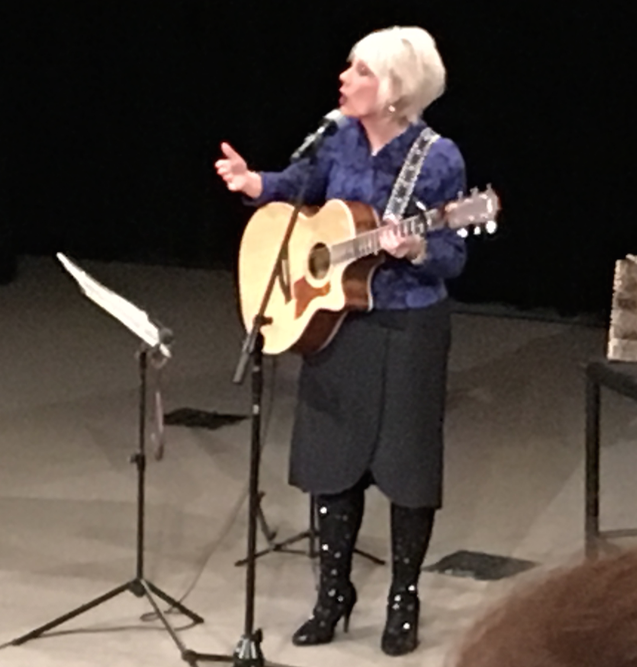
Little did we know that our demure colleague Lynn O’Dowd, CPO® would present a full-on Lady Gaga concert (with forays into an Aerosmith singalong) in service to teaching us how to quiet our self-doubt, push our limits, and (to use the words of a long-ago NAPO conference speaker), recognize our magnificence!
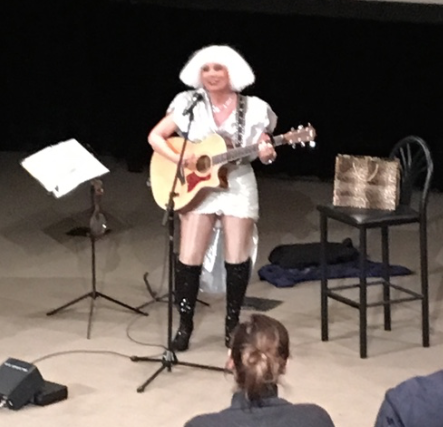
On Saturday, we had another set of special (but sadly, simultaneous) session options: “Learn How to Make Your Wardrobe and Personal Brand A Perfect Match” and “It’s All In Your Head: Harnessing the Power of Self-Talk.” I attended the latter, presented by Mary Fran Bontempo, and haven’t nodded in agreement or laughed so hard in a long time. In that session, we learned about how the language we use influences the way we feel, gained perspectives on coping with (scary) change, and got some commandments.

My favorite was, “Thou Shalt Ignore More,” referring to finding ways to keep everyday frustrations (from rude people to bad combovers) at bay by ignoring more of whatever really has very little to do with us. Expanding on a Sheryl Sanberg quote, Mary Fran wisely shared, “Before you can lean in to your own life, you have to lean out of everyone else’s.”
Lest you think we professional organizers are all work and no play, be assured that we were extremely well-fed at the Q Center’s all-inclusive and voluminous buffets, and we danced our way through our Saturday night President’s Reception. You’ve likely never seen anyone boogie along to Despacito and I Will Survive in such an efficient way!
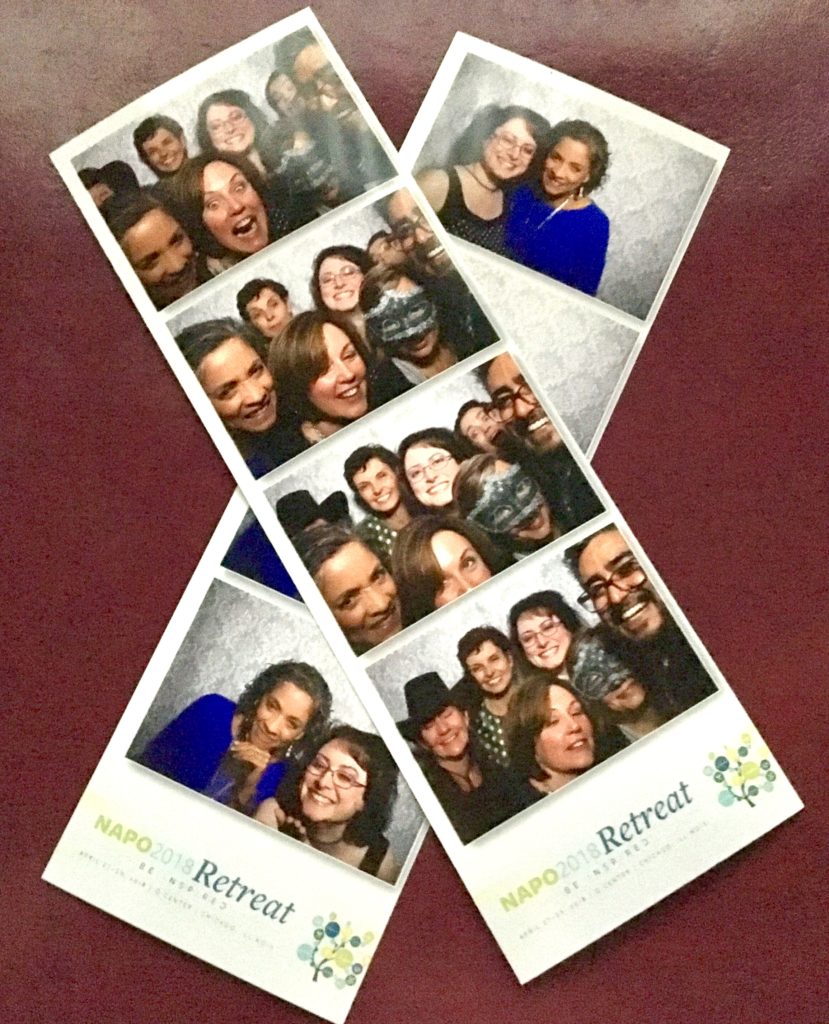
Next year for NAPO2019 in Fort Worth, Texas, we’ll be returning to a traditional conference with our favorite vendors in tow, but I suspect the success of the experiential and self-care tracks will live on longer than any bruises from bumping into walls in our tiny sleeping chambers.

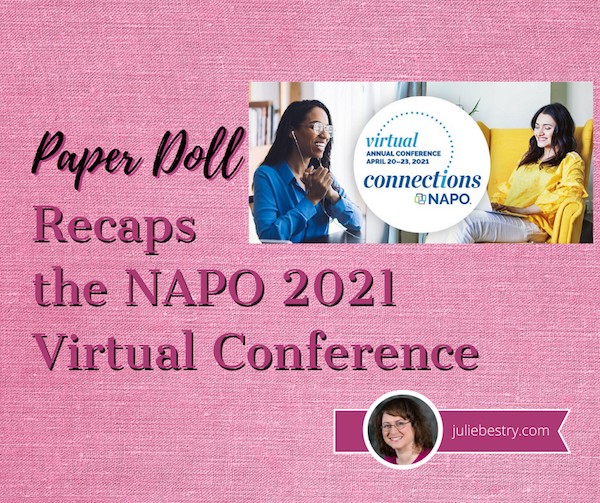

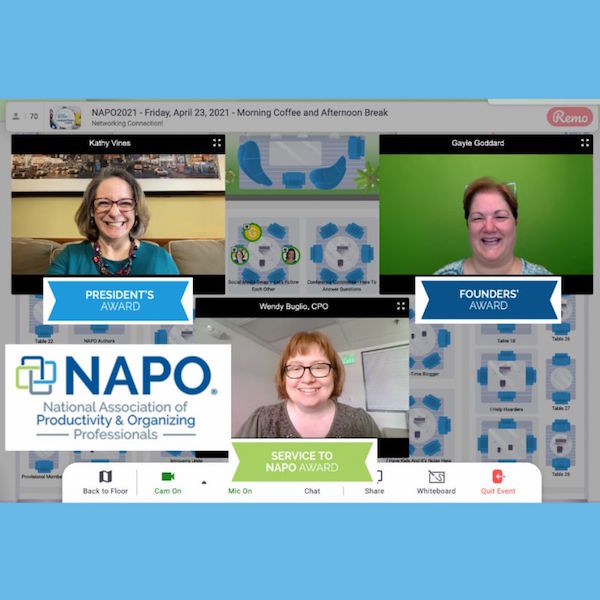


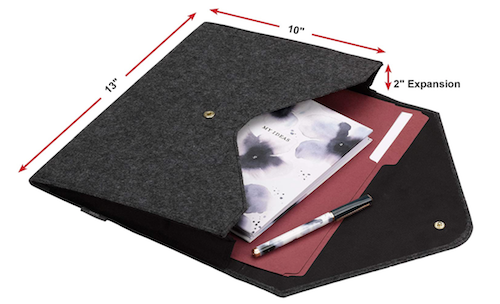
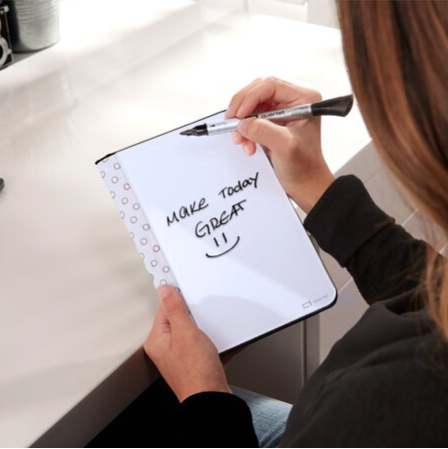
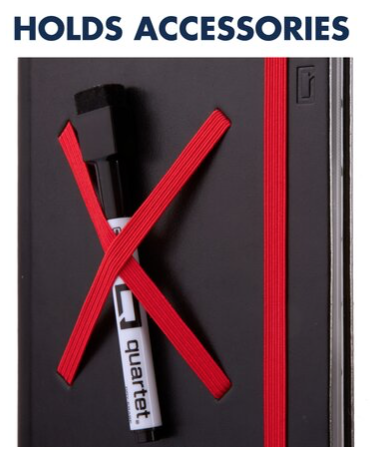
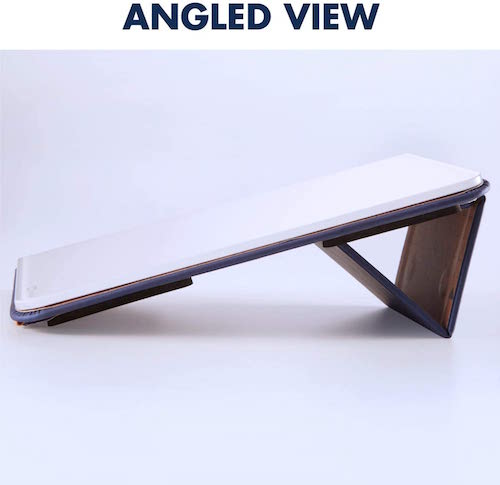
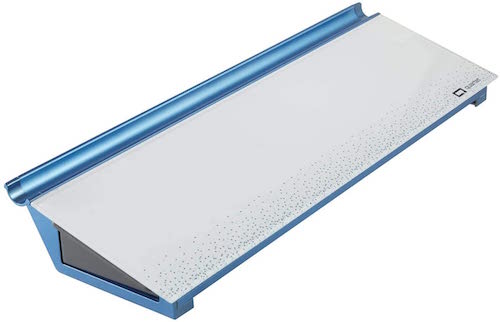
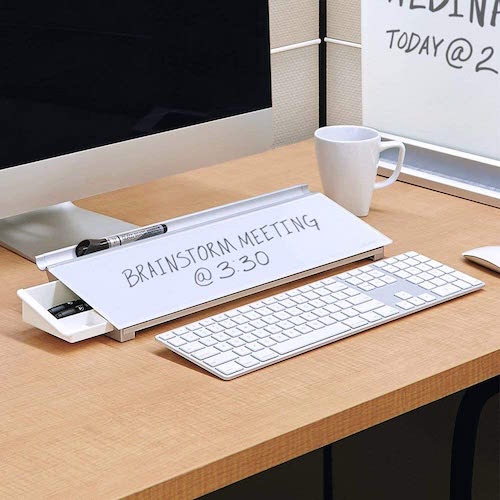
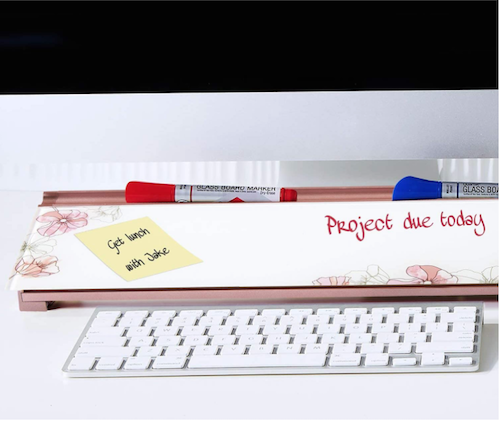
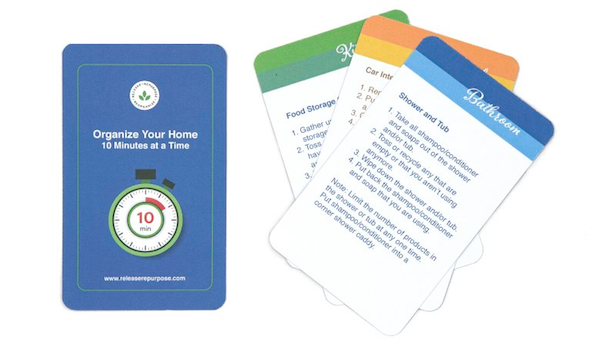
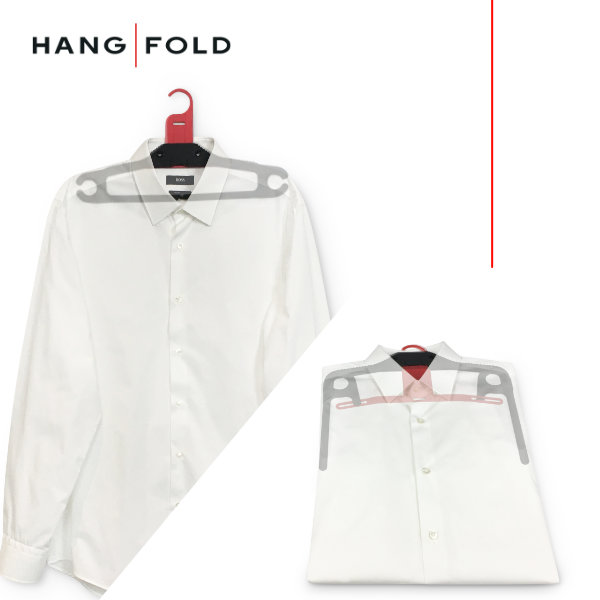
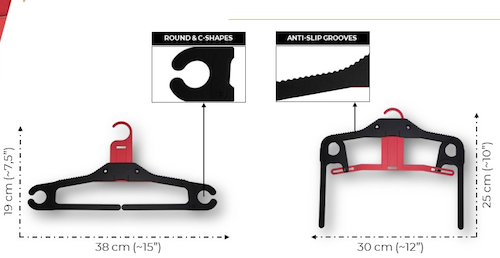







Follow Me